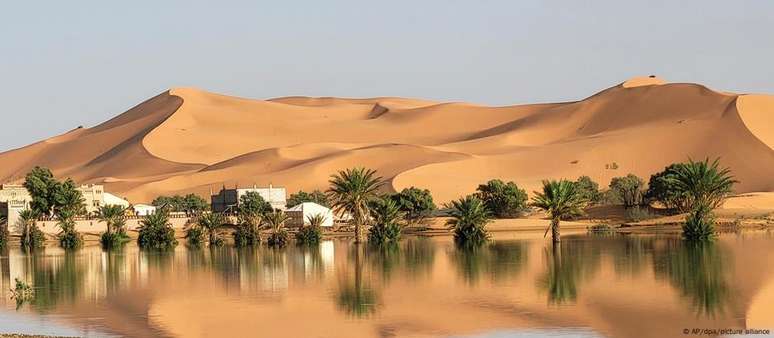Heavy rains have flooded several areas of the desert. The phenomenon, which has not occurred for at least 30 years, is linked to drought in the Amazon. A rare sequence of storms has flooded areas of the Sahara desert in North Africa in recent weeks, leaving rivers of water among palm trees and trees. sand dunes.
On September 10, at least 20 people died in Morocco and Algeria due to the rains. The distribution of drinking water, road infrastructure and electricity networks were damaged. The rains also hit some of the regions that suffered an earthquake a year ago.
The Sahara is considered one of the driest places in the world and it rarely rains in late summer. According to the representative of the General Directorate of Meteorology of Morocco, Houssine Youabeb, this type of precipitation has not been seen in the region for decades. “It’s been 30 to 50 years since it rained this much in such a short time,” he said.
The rains change the climate in the region
These rains, classified by meteorologists as extratropical storms, could change the course of the region’s climate in the coming months. They cause the air to hold more moisture, causing more evaporation and, as a result, more storms, Youabeb said.
On average, the Moroccan desert sees less than 250 millimeters of rain per year. In some regions rainfall does not exceed a dozen millimeters per year. According to the Moroccan government, however, only two days of rain in September were enough to trigger this rate.
In Tagounite, a village about 450 kilometers south of the capital, for example, more than 100 millimeters of rain was recorded in a 24-hour period.
After the rains, water flowed from the sands of the Sahara among castles and desert flora. NASA satellites have identified the formation of rivers of water filling Lake Iriqui, which has remained dry for 50 years.
The storm comes after years of extreme drought
The storm arrives in the region after six consecutive years of drought, which forced water rationing in several parts of Morocco.
The abundance of precipitation will likely help replenish underground aquifers, which are used to supply water to desert communities. The region’s reservoirs filled at record rates throughout September.
It is unclear, however, to what extent September rains will help ease the region’s drought.
According to NASA, the September storm hitting the desert is associated with an extratropical cyclone, an extremely rare event in the region. “The system formed over the Atlantic Ocean and spread southward, dragging moisture from equatorial Africa to the northern Sahara,” the agency wrote.
Also according to NASA, research conducted by Moshe Armon, of the Institute of Earth Sciences of the Hebrew University of Jerusalem, indicated that, of the over 38 thousand precipitation events that have occurred in the Sahara in the last two decades, only 30% of them occurred during the summer. Of these, almost none were associated with an extratropical cyclone, as is happening now.
Rain in the desert is associated with drought in the Amazon
An analysis published by the Satellite Image Analysis and Processing Laboratory, at the Federal University of Alagoas in August, shows that strong and constant winds from the planet’s southeast, added to an ocean temperature anomaly, also contribute to rain in the Sahara and link the desert to drought in the Amazon.
“With the [oceano] Warmer North Atlantic, trade winds [constantes] of the south-east have maintained the ZCIT [Zona de Convergência Intertropical] far from the Amazon, inhibiting precipitation and benefiting the Sahara. This is just one of the indirect impacts that the location of the ZCIT in Africa may have on the Amazon climate,” the laboratory writes.
gq/cn (ap, ots)
Source: Terra
Rose James is a Gossipify movie and series reviewer known for her in-depth analysis and unique perspective on the latest releases. With a background in film studies, she provides engaging and informative reviews, and keeps readers up to date with industry trends and emerging talents.


![Tomorrow belongs to us: What awaits you in the 1928 episode, Wednesday, on April 23, 2025 [SPOILERS] Tomorrow belongs to us: What awaits you in the 1928 episode, Wednesday, on April 23, 2025 [SPOILERS]](https://fr.web.img4.acsta.net/img/55/e7/55e710c79eaf5e908ffd2238fbef63d3.jpg)





